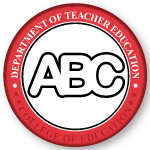Author ORCID Identifier
Document Type
Conference Proceeding
Publication Date
3-2021
Abstract
Through the eyes of professional women in computing, we can better understand the impact of workplace structures, higher education pathways, and the particular closed nature of the tech industry. This study of women’s life histories contributes to the work of in-depth qualitative examinations of CS learning contexts and psychological studies investigating phenomena such stereotype threat which contextualize the experience of women in computing environments. Drawing inspiration from Margolis and Fisher’s work drawing the “blueprints” of the “boy’s clubhouse” of computing education [20], as well as McDermott and Webber’s analysis of when math learning occurs [22], we ask when, where, and how is gender being invoked and created, as a way to unpack the places, events, and interactions that shape women’s participation in the Silicon Valley workforce. This qualitative analysis of 13 life history interviews with professional women in computing shows that gender becomes salient for women in public settings, particularly in early adulthood when women enter male-dominated classrooms, teams, and workplaces that foster “brogramming” culture. CS educators, hiring managers, and recruiters all need to be aware that the effects of gender go beyond just including more women in classrooms and on teams. The learning environment, incentives for participation, and the goal of diversity all need to be better aligned in order to foster an equitable workforce.
Recommended Citation
Pozos, Rose K. and Friend, Michelle, "“You Sound Like a Good Program Manager”: An Analysis of Gender in Women’s Computing Life Histories" (2021). Teacher Education Faculty Proceedings & Presentations. 34.
https://digitalcommons.unomaha.edu/tedfacproc/34


Comments
© 2021 Copyright held by the owner/author(s). Publication rights licensed to ACM.
This is a post-print version of paper presented at 52nd ACM Technical Symposium on Computer Science Education (SIGCSE '21), March 13--20, 2021. The Version of Record may be found here: https://doi.org/10.1145/3408877.3432433.